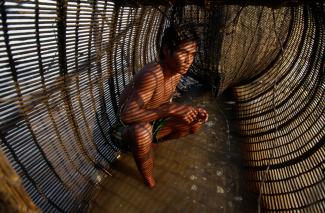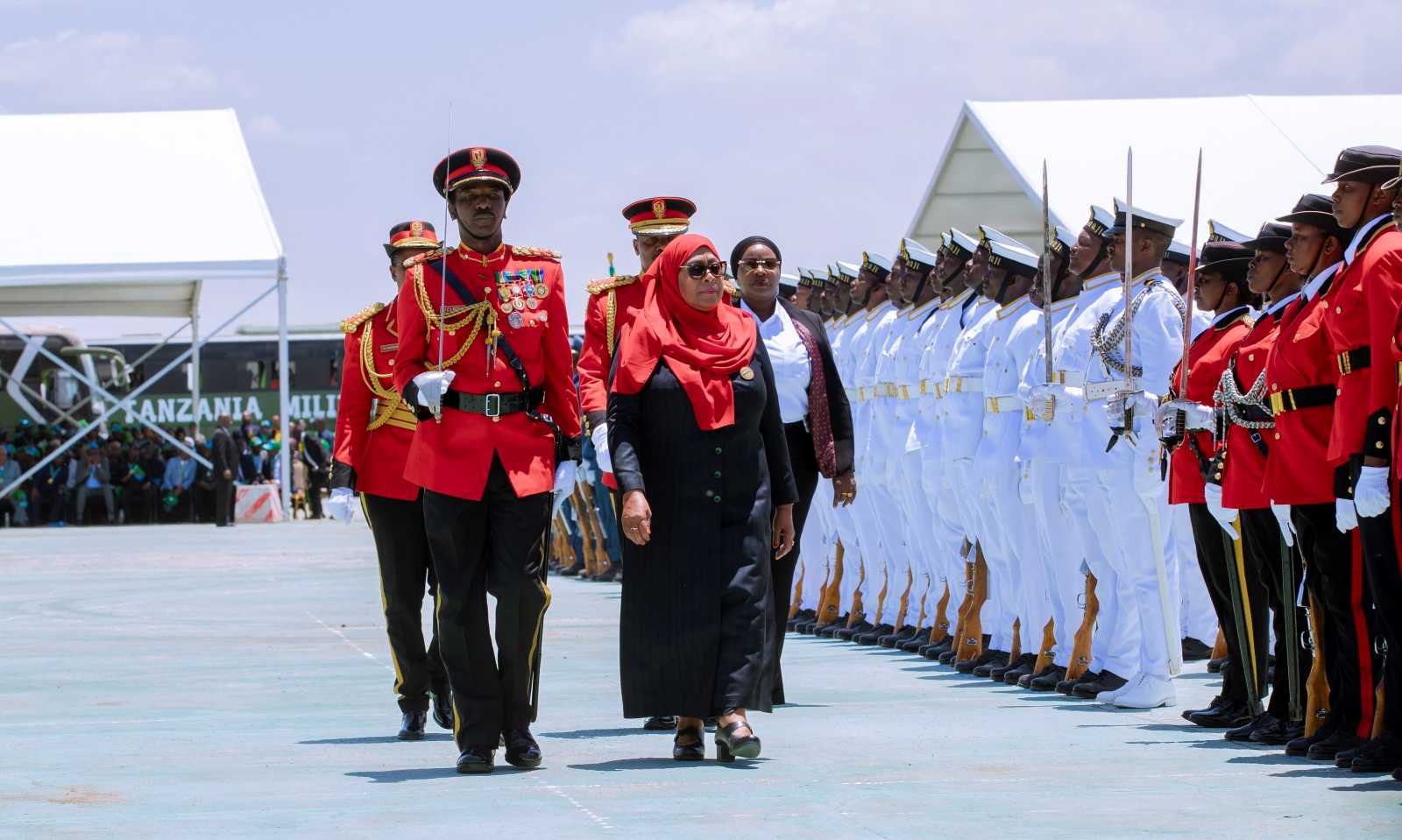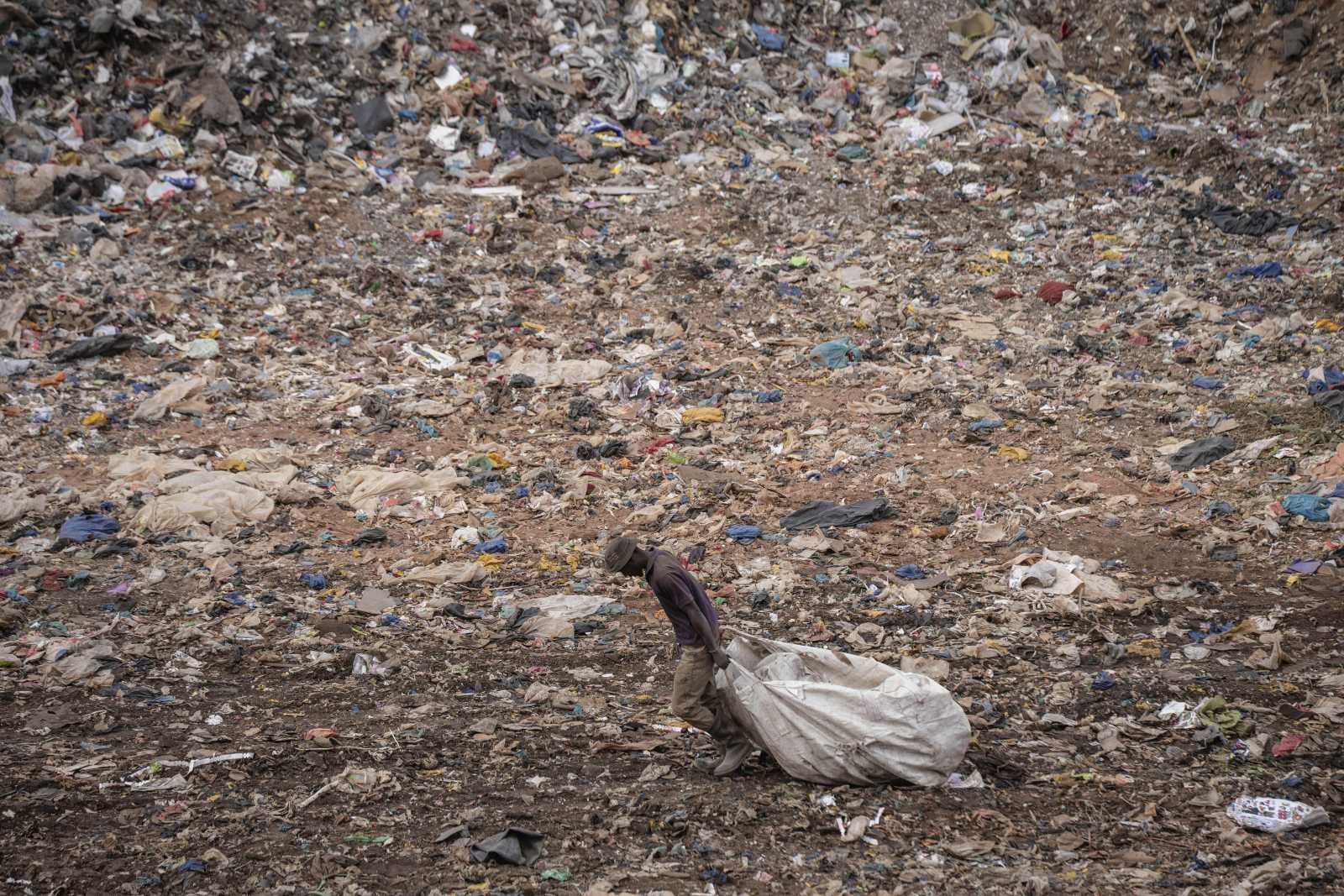Eco systems
Dangerous dams

The Mekong’s abundance of species and foods seem almost unfathomable: 1,300 kinds of fish live in this river that runs across Southeast Asia from China through Myanmar, Laos, Thailand and Cambodia to Vietnam. Along the lower Mekong alone – the part south of the Chinese border – 2.5 million tons of fish are caught every year. That amount is a quarter of all the fish caught in rivers and lakes worldwide. The Mekong supports the largest inland fishery system in the world. For a large share of the 60 million people who live in this river basin, the Mekong is the main source of protein and one of their most important sources of food.
The 4,900 kilometre long river offers another sort of wealth however – water power. Its energy potential is immense, its utilisation comparatively cheap and renewable, so governments in the region would like the Mekong to provide electricity to their countries.
Six big power stations are already operating, all of them in the Western Chinese province Yunnan. More than 30 more are being built or still in planning, at least eight of them in Yunnan and a good dozen along the upper reaches of the river in the Chinese province Qinghai and in the autonomous region of Tibet. Laos is constructing or planning 10 power stations and Cambodia two. There is only scant public information however.
One dilemma is obvious nonetheless. Robert Mather, head of the environmental protection network IUCN’s Southeast Asia Group, puts it like this: “You cannot have both at the same time: the current amount of fish and the projected supply of energy.” The hydroelectric-power stations with their huge dams and retaining walls would put an end to the abundance of fish and the river’s unique ecosystem.
Devastating consequences
In an attempt to somehow balance both goals, the riparian states along the lower course of the river – Laos, Cambodia, Thailand and Vietnam – have pledged to cooperate in the Mekong River Commission (MRC). This intergovernmental organisation was founded in 1995. It is funded in large part by donor countries.
The MRC does not disapprove of hydroelectric power generation, yet it propagates a responsible, sustainable development of the Mekong’s water resources. Only when and if a consensus can be reached among member states, shall a project be realised. China, which desperately needs all the electric power it can get for its booming industry, will neither be stopped by environmental concerns nor by international coordination efforts however. The People's Republic is going it alone. At least, however, China and Myanmar are involved in a dialogue with the MRC.
However, the first projected power station along the lower course of the river in Laos’ northern province Xayaburi started off a grim controversy among the MRC member states (see box on p. XXX). The government in Laos is determined to build this power station with a capacity of 1,285 megawatts (MW). But the Worl Wide Fund for Nature (WWF) warns against the mega project. In May, this environmental campaign group published a report called “Seven sins of dam building”. The WWF considers the project “one of the world’s most devastating”. Xayaburi will endanger the Mekong’s environment, according to the report. Thirteen unique, interconnected river systems would be torn apart and lose their ecological function.
According to International Rivers, another environmental protection organisation, at least 2,100 people will lose their homes due to the dam; the first relocations have already taken place. Another 202,000 people who live near the future power station will lose agricultural land, fish as a source of food and income, their income from gold washing or the river as a transportation route.
Cambodia will probably suffer most because of Xayaburi: the Mekong determines the cycle of the Tonle Sap river, which is fed by a lake of the same name and flows into the Mekong near Phnom Penh. In the rainy season, however, the Mekong has so much water that the Tonle Sap is reversed and its lake increases tenfold. “The Mekong is our elixir: it makes possible the reproduction of fish in the Tonle Sap and it waters and it fertilises our land,” explains Chit Sam Ath from the River Coalition of Cambodia. Without the Mekong cycle there would neither be enough fish nor enough rice.
The Mekong delta, Vietnam’s most important rice growing area, similarly depends on the river's water. At the APEC summit in September 2012, Vietnam’s President Truong Tan Sang warned against intergovernmental conflicts over access to water. He compared the significance of water in the 21st century to that of oil in the 19th and 20th centuries.
The people living along the Mekong in northern Thailand fear the consequences too: “Our livelihood is being changed completely,” says Itthiphol Khamsuk, a local representative of the Mekong communities from seven provinces of the country. The Chinese dams have already caused the water level to drop, and the natural cycles have changed. “There is far less fish and the fields along the river need more water during the dry season than in the past,” he explains. When water is released from the dams, floods are severe and untimely. One problematic impact is erosion.
Not worthwhile
The Laotian government won't be stopped, however. It told the MRC it would start construction of a second Mekong power station – Don Sahong – near the Cambodian border in November. Construction of access roads for yet another power station – Pak Beng – were also due to begin by the end of this year according to civil society activists. The government denies such allegations. No MRC coordination process has been initiated so far.
Should the projects materialise, more than half of the lower Mekong would be affected by dams. According to experts from both WorldFish and the WWF, fish will no longer be able to swim upstream to their spawning grounds. About 70 % of the Mekong’s 1,300 fish species migrate long distances every year. They include several endangered species such as the up to three meter long Mekong giant catfish, which has become the protest movement’s flag fish.
Critics say protective measure such as fish passes or elevators are unsuitable for two reasons:
- the many different kinds of migrating species require different support mechanisms, and
- the numbers are too great.
“In the main migration season, up to 30 tons of fish pass by in one hour,” says Pianporn Deetes from International Rivers Thailand. “It is impossible to transport them all by elevator.”
For the region, fish extinction would have dramatic economic consequences. The Mekong fisheries generate incomes worth 1.54 billion euro per year, excluding processing and local consumption. The MRC predicts that sum may drop by up to 42 %. Moreover, losses in agriculture may amount to 400 million euro annually. To top it all off, reliable food supply is at stake.
The expected revenues from power generation cannot compensate the disadvantages awaiting the people along the Mekong. They will neither benefit significantly from the electricity nor from the earnings. The big money will be made by private construction and operating companies, as well as the state as shareholder and tax recipient.
Experts say that the utilisation of water power along the Mekong is not needed for reliable energy supply. The MRC has computed that all the projected power stations together would generate up to 13,160 megawatts, which would be the equivalent of eight percent of the energy requirement expected for 2025 in the lower Mekong basin. But the additional megawatts would become redundant if energy efficiency is improved. Thailand, for instance, which is the largest energy consumer in the region, sees the potential to save up to 25 % of energy within the next 20 years.
Another argument for using the Mekong to produce energy is easily refuted too: water power may be renewable in principle, but the schemes planned are anything but sustainable, whether in social or environmental terms. According to IUCN activist Mather, a sustainable usage along the main river is impossible, though the damage would be less if dams were built on tributaries. The real solution, in his eyes, is relying on other renewable energy sources such as sun, wind and biomass, which could be used in a more sustainable manner. “In my opinion, Mekong power stations should be the last option.”
Katja Dombrowski is a freelance journalist based in Bangkok. kd@katja-dombrowski.info








